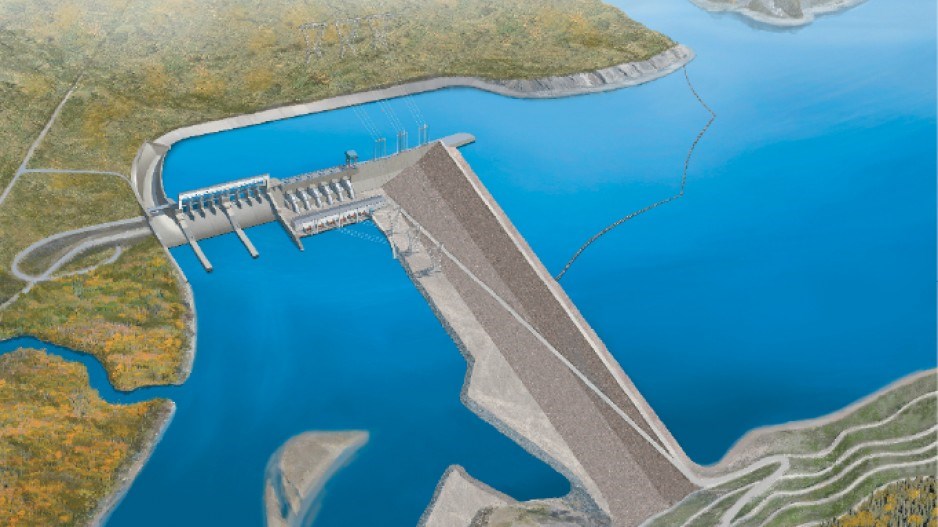Public hearings that began in Fort St. John December 9 mark the resumption of the decades-long battle over BC Hydro’s contentious Site C Peace River dam proposal.
More than 200 people jammed into the town’s Pomeroy Hotel for the hearings’ opening remarks, including a 100-strong contingent from the Treaty 8 Tribal Association.
Following a prayer and performance from the Doig River Drummers, Treaty 8 members stood before the three-member Canadian Environmental Assessment Agency panel, laying out an array of moose antlers and melons, jars of soil and berries, animal hides and photos of ancestors and the valley that would be flooded if the dam is built.
Signs implored the panel to “keep an open mind” and to “listen when an elder speaks to you.”
“We did this to help set the tone of how we feel about this,” Saulteau band councillor Tammy Watson told the panel. “The cultural piece hasn’t been talked about [in Hydro’s environmental assessment].”
Hydro is making its third case for Site C since 1982. It aims to build the 60-metre-high earth dam about seven kilometres from downtown Fort St. John, along with an 1,100-megawatt generating station, to harness Peace River water flow to meet a forecast 40% jump in domestic electricity demand over the next 20 years.
B.C.’s population is expected to increase by more than a million people in 20 years, and Hydro says Site C would add enough power to the provincial energy grid to power about 450,000 homes each year.
Hydro has held approximately 120 consultation meetings with communities and landowners, including 40 meetings with aboriginal groups across B.C., Alberta and the Northwest Territories, said Susan Yurkovich, who serves as executive vice-president for Site C.
“Building Site C is the right thing to do so our customers can enjoy the benefits of domestic, renewable energy for years to come.”
The dam, with its $7.9 billion price tag, promises to add an estimated $3 billion to the provincial GDP during its construction, along with some 33,000 direct, indirect and induced jobs, according to the utility.
But other participants in the hearings expressed concern over the dam’s environmental impact in a region of B.C. already scarred by energy and resource extraction developments.
“Our report shows much of the mature forests, rivers, wetlands and other elements of natural capital in the Peace region have already been severely impacted to date by human land use within northeastern B.C.,” the David Suzuki Foundation’s Faisal Moola told the panel December 11.
The report from Moola, an adjunct professor of forestry and environmental studies at both the University of Toronto and York University, studied land-use changes in the Peace region over the last 40 years and the pressures industrial development has placed on the ecology and environment of the Peace River Valley, much of which has been lost due to the cumulative impacts of natural resource development.
The report estimates that there are 45,000 kilometres of roads, 29,000 kilometres of pipelines and 1,160 kilometres of transmission lines, along with 16,000-plus oil and gas well sites and another 8,500 oil and gas facilities in the region.
“Site C would be built in a region of Canada exposed to unprecedented intensity of human land use. The cumulative effects of land use are the primary driver of loss of natural capital and other areas of nature,” Moola told the panel.
Site C hearings are scheduled to continue until January 23, 2014. For more updates on the hearings, visit biv.com. •




